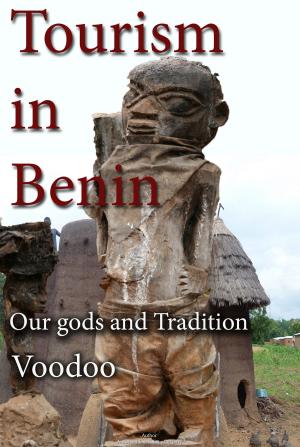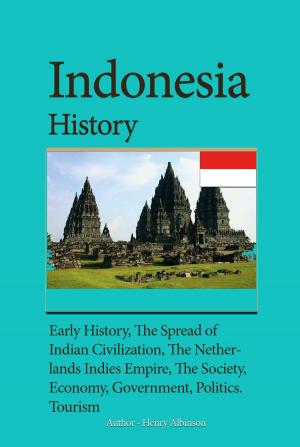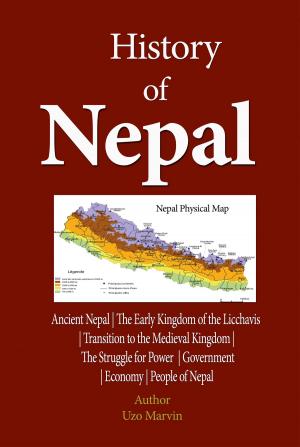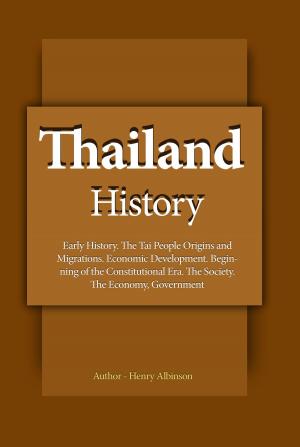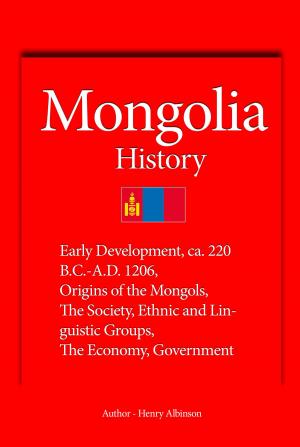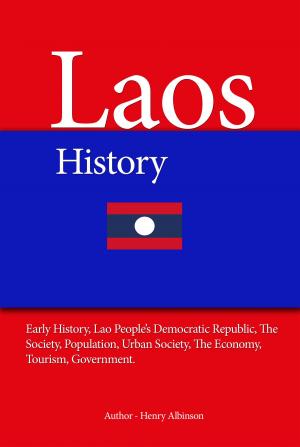| Author: | Henry Albinson | ISBN: | 9781311276346 |
| Publisher: | Sonit Education Academy | Publication: | June 25, 2016 |
| Imprint: | Smashwords Edition | Language: | English |
| Author: | Henry Albinson |
| ISBN: | 9781311276346 |
| Publisher: | Sonit Education Academy |
| Publication: | June 25, 2016 |
| Imprint: | Smashwords Edition |
| Language: | English |
Early history of Bhutan, and the environment, In the book, also Bhutan culture, Bhutan, politics, Bhutan people, Although knowledge of prehistoric Bhutan has yet to emerge through archaeological study, stone tools and weapons, remnants of large stone structures, and megaliths that may have been used for boundary markers or rituals provide evidence of civilization as early as 2000 B.C. The absence of neolithic mythological legends argues against earlier inhabitation. A more certain prehistoric period has been theorized by historians as that of the state of Lhomon (literally, southern darkness) or Monyul (dark land, a reference to the Monpa aboriginal peoples of Bhutan), possibly a part of Tibet that was then beyond the pale of Buddhist teachings. Monyul is thought to have existed between 500 B.C. and A.D. 600. The names Lhomon Tsendenjong (southern Mon sandalwood country) and Lhomon Khashi (southern Mon country of four approaches), found in ancient Bhutanese and Tibetan chronicles, may also have credence and have been used by some Bhutanese scholars when referring to their homeland. Variations of the Sanskrit words Bhota-ant (end of Bhot, an Indian name for Tibet) or Bhu-uttan (meaning highlands) have been suggested by historians as origins of the name Bhutan, which came into common foreign use in the late nineteenth century and is used in Bhutan only in English-language official correspondence. The traditional name of the country since the seventeenth century has been Drukyul- -country of the Drokpa, the Dragon People, or the Land of the Thunder Dragon--a reference to the country's dominant Buddhist sect.
Early history of Bhutan, and the environment, In the book, also Bhutan culture, Bhutan, politics, Bhutan people, Although knowledge of prehistoric Bhutan has yet to emerge through archaeological study, stone tools and weapons, remnants of large stone structures, and megaliths that may have been used for boundary markers or rituals provide evidence of civilization as early as 2000 B.C. The absence of neolithic mythological legends argues against earlier inhabitation. A more certain prehistoric period has been theorized by historians as that of the state of Lhomon (literally, southern darkness) or Monyul (dark land, a reference to the Monpa aboriginal peoples of Bhutan), possibly a part of Tibet that was then beyond the pale of Buddhist teachings. Monyul is thought to have existed between 500 B.C. and A.D. 600. The names Lhomon Tsendenjong (southern Mon sandalwood country) and Lhomon Khashi (southern Mon country of four approaches), found in ancient Bhutanese and Tibetan chronicles, may also have credence and have been used by some Bhutanese scholars when referring to their homeland. Variations of the Sanskrit words Bhota-ant (end of Bhot, an Indian name for Tibet) or Bhu-uttan (meaning highlands) have been suggested by historians as origins of the name Bhutan, which came into common foreign use in the late nineteenth century and is used in Bhutan only in English-language official correspondence. The traditional name of the country since the seventeenth century has been Drukyul- -country of the Drokpa, the Dragon People, or the Land of the Thunder Dragon--a reference to the country's dominant Buddhist sect.


